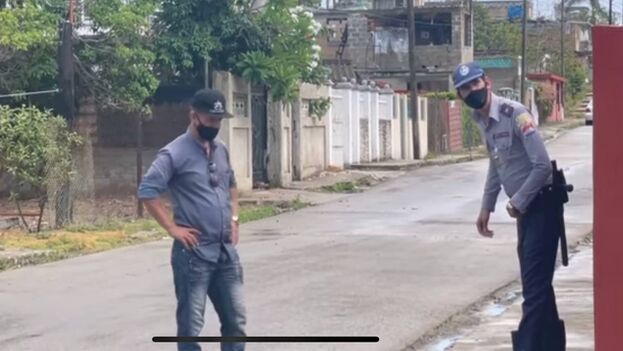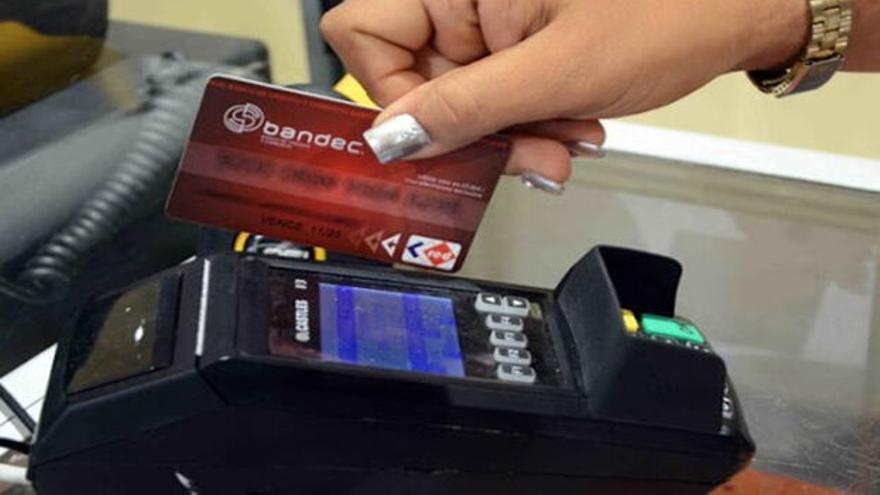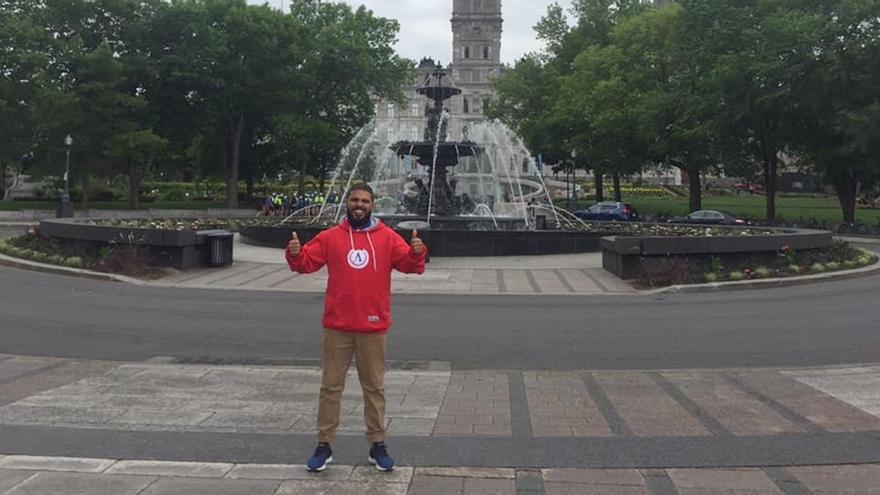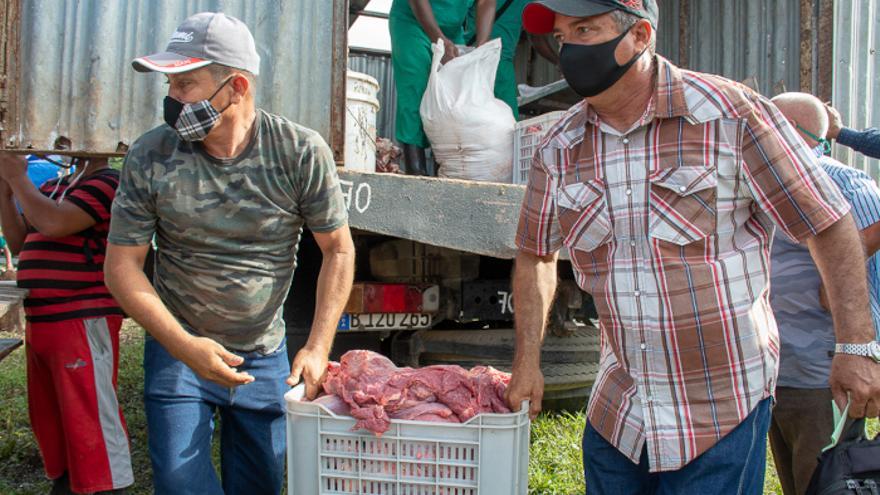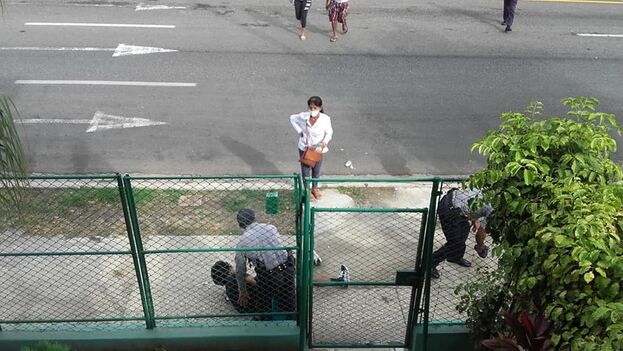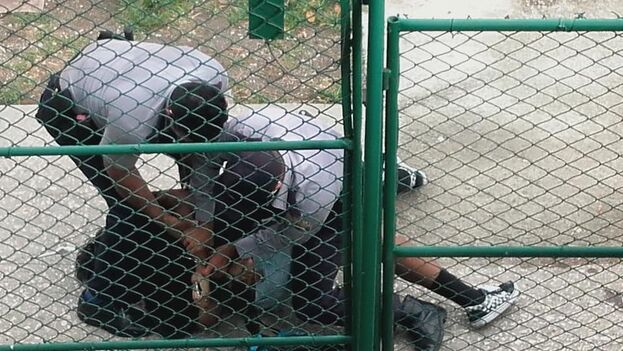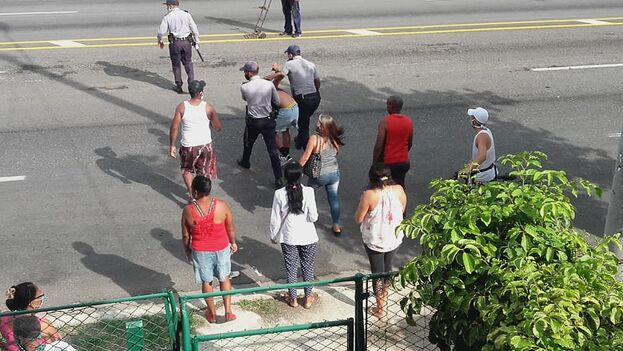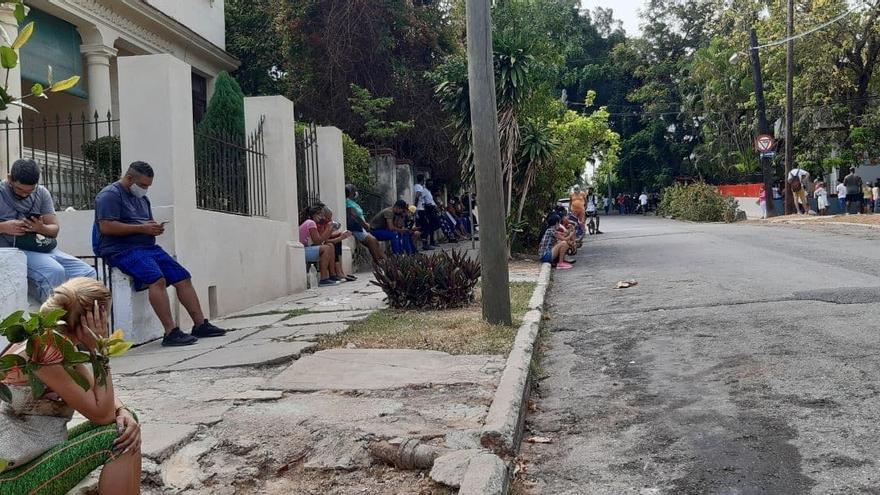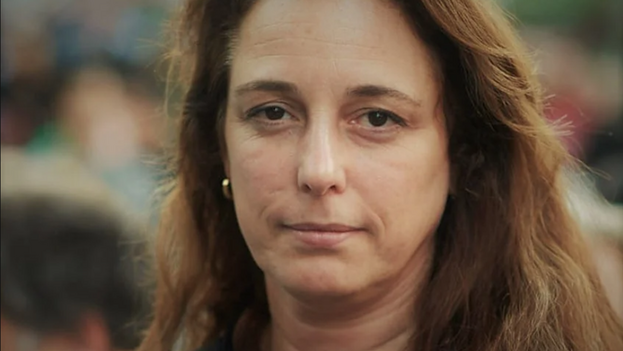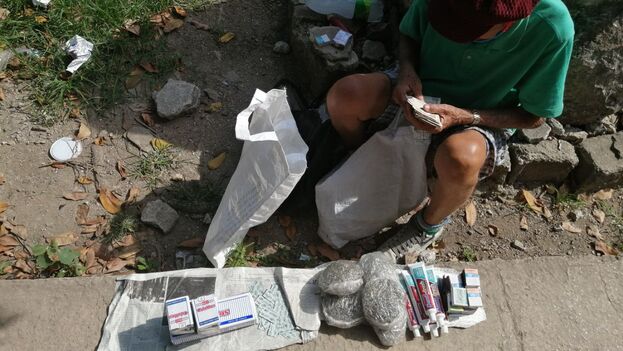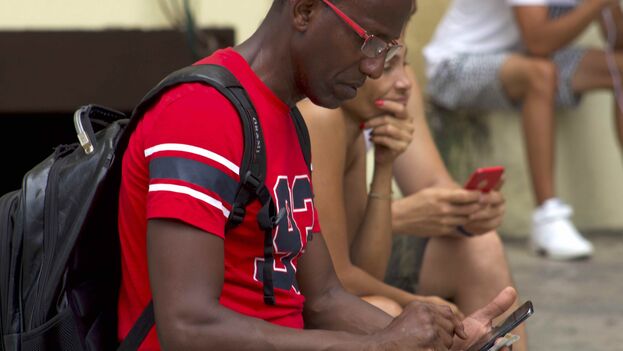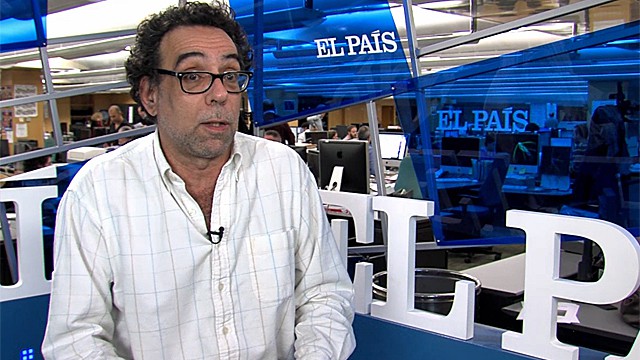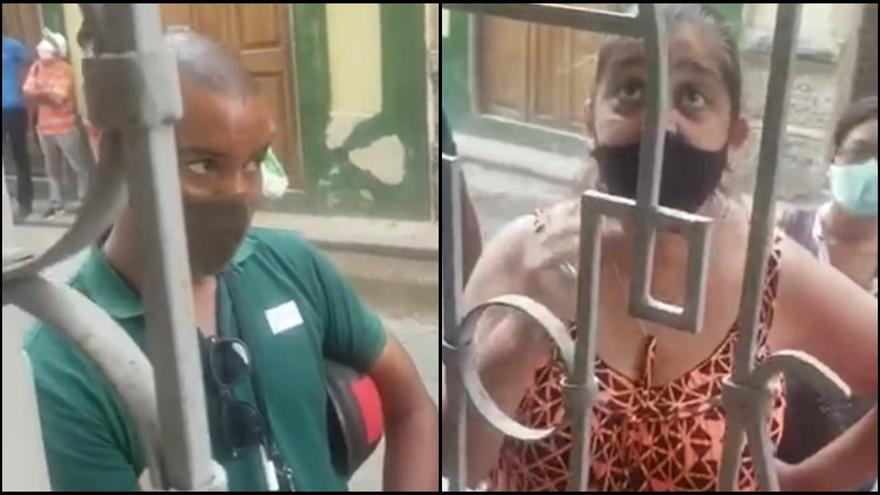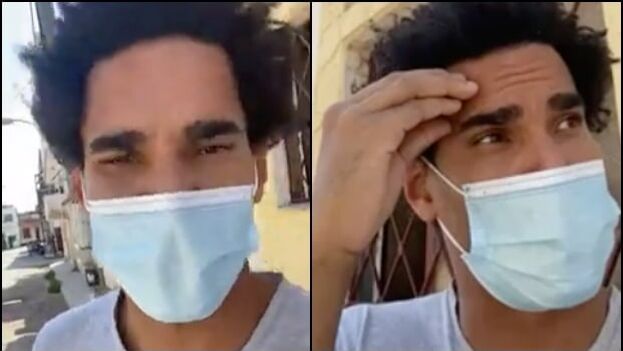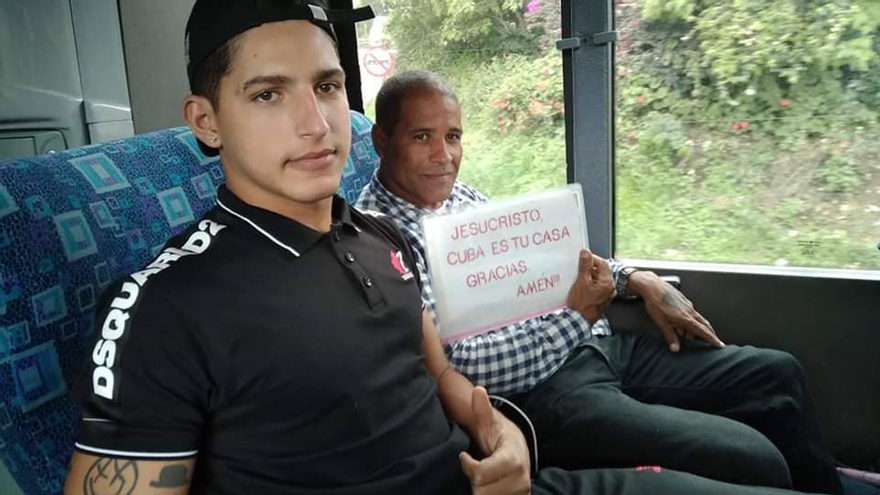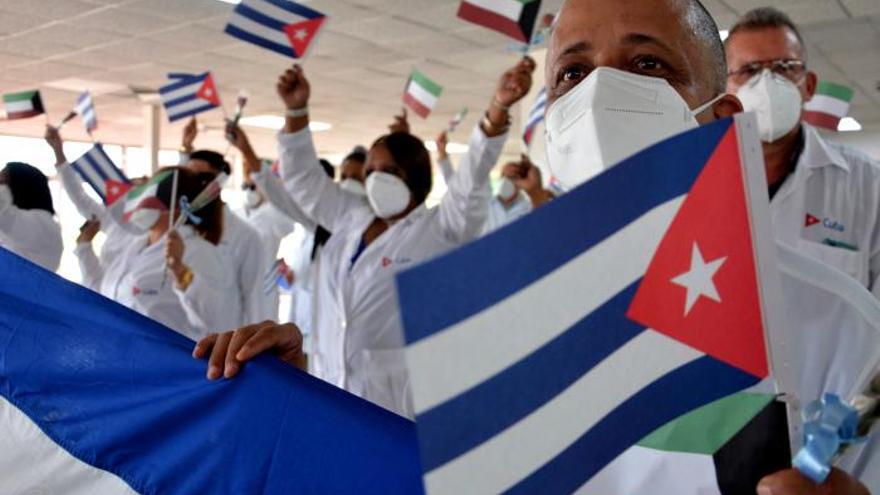
![]() 14ymedio, Madrid, 9 June 2021 — Every medical brigade that returns to Cuba is an opportunity for promotion with a view to the Nobel Peace Prize. This Tuesday the returning brigade was the last contingent that remained in Kuwait, where the Cuban government sent more than 300 healthcare workers in the last year to reinforce the group that was already there, and to help alleviate the ravages of Covid-19.
14ymedio, Madrid, 9 June 2021 — Every medical brigade that returns to Cuba is an opportunity for promotion with a view to the Nobel Peace Prize. This Tuesday the returning brigade was the last contingent that remained in Kuwait, where the Cuban government sent more than 300 healthcare workers in the last year to reinforce the group that was already there, and to help alleviate the ravages of Covid-19.
“Today, upon returning to the homeland with the satisfaction of having fulfilled our duty, we are convinced that they will be willing to carry out the necessary missions in our country and anywhere else in the world,” said Jorge Delgado Bustillo, head of the Central Unit for Medical Cooperation, speaking on behalf of Miguel Díaz-Canel to the 60 health professionals who landed yesterday in Havana from the Persian emirate.
The group consisted of 29 doctors and 31 nurses who, according to the official note, “treated 101,290 patients, at a rate of 280 patients a day, saved 3,130 lives, and performed 435,990 nursing procedures and 112 major surgeries, 12 minimal access surgeries and 69 minor surgeries.” continue reading
In August of last year, the first group of health workers returned to the island, which, according to the Ministry of Foreign Affairs, consisted of 152 aid workers who treated “758 patients infected with the pandemic, and saved 189 of them from death.”
In January, the second group arrived, in this case of 125 professionals, who “treated 33,753 patients with Covid-19, carried out 374,680 nursing procedures, worked in the emergency services, and in intensive therapies and attended 30 patients per day.”
It is unknown how the jump was made from 758 patients in two months to more than 33,000 in six, despite the reduction of 150 in the total number of health workers present in Kuwait, although it is less understood that in June the figure tripled with just 60 doctors, even if the figure was accumulated.
In addition, the number of cases of coronavirus in Kuwait has been 320,257, so if Cubans make reference in their accounting to only patients with Covid-19, they would have dealt with almost half of those infected in the country. However, it is possible that in the global count, where it is not clear whether the patients were afflicted with the coronavirus, others hospitalized for any circumstance have been included.
All three returns of the brigades have been celebrated with the usual epic. “The pure white of the medical gowns distinguished the night veil of the first hours of the date, when the 152 members of the internationalist Henry Reeve contingent descended from the plane to the national soil, to be received as heroes,” said the press release on the August contingent, who did not remain there. “The assistance of Cuban solidarity reversed the pace of death.”
A less literary note was released for the January group, but was signed by the Cuban president himself and entitled Henry Reeve also with his imprint of love in Kuwait.
The Cuban people still do not know how much was paid for that love, although there has been speculation with figures of around 12 million dollars. In Kuwait, a local doctor can earn around $7,000, which can be doubled in cases of high specialization or overtime.
The Cuban government has doctors in several Middle Eastern countries, such as the United Arab Emirates, Saudi Arabia, Bahrain or Qatar. In the latter, several Cuban health workers fled and reported the conditions under which they worked in this mission, similar to the usual ones, including the requirement that they surrender their passports, the impossibility of communicating with citizens of the host country, the obligation to give public support to the Government and participate in its activities and, finally, the fact that the Cuban government keeps between 70% and 90% of money paid by the host country for the healthcare workers’ services, with the remainder paid out in salaries.
Cuba is taking advantage of its doctors to profit from its image during the pandemic. In addition to being one of the few economic assets that remains after the collapse of tourist activity, the obstacles to remittances and the collapse of its ally, Venezuela, the obtaining of the Nobel Peace Prize, which it has been seeking for months, would yield — in addition to the value of the award, just over a million dollars (10 million Swedish crowns) — the prestige that it craves.
Since April 2020, when the health crisis broke out, the campaign to win the Norwegian award for Cuba’s Henry Reeve Brigade has been insistent in its search for support around the world. This same Tuesday, during a debate in the European Parliament on human rights in Cuba, two Members of the European Parliament reviewed the work of the island’s doctors and their great contribution against Covid-19 worldwide.
This international campaign is accompanied by the internal one. Physicians are greeted with pomp at each return, with Kuwait just the most recent example. Just three weeks ago, Dr. Julio Guerra Izquierdo, head of the brigade stationed in Mexico, insisted in his speech that the low mortality rate in that North American country was due in part to Cuban health workers. “With the hard work of our collaborators, it was possible to reduce the fatality at the end, after four months, to 9.7%,” he defended.
A paradigmatic case of this amplification of the work of the Cubans is that of Andorra, where that country’s press did not skimp on its mockery of Cuba’s official propaganda: “If you read the balance sheet for the delegation presented by the the Castro regime media (…) thanks to Cuba and the Cuban health workers, the pandemic, the coronavirus, has not swallowed Andorra and Andorrans. It has been a miracle (…) The figures are such that it is evident that the brigade has saved the Principality from Covid as, in his day, Charlemagne [a medieval emperor decisive in Andorran independence and the European configuration] saved these latitudes from other events,” said an article in the Altaveu newspaper.
In the European principality, the data on cured people was also questioned, which permits putting in quarantine any official figure that is provided. “They have supposedly treated 821 critically ill patients in the Intensive Care Unit of the Nostra Senyora hospital in Meritxell. It is evident and clear that the hospital’s ICU has not treated this number of patients in any way shape or form. The collapse would have been brutal. But in Cuba, it is clear, they will be heroes. They have been decisive in the recovery of more than 700 patients, which are all the people officially recovered so far and of whom Cuban health workers have barely seen 20%,” the article added.
The Nobel Peace Prize will be announced in October, so expect a long summer of lavishly celebrated returns.
____________
COLLABORATE WITH OUR WORK: The 14ymedio team is committed to practicing serious journalism that reflects Cuba’s reality in all its depth. Thank you for joining us on this long journey. We invite you to continue supporting us by becoming a member of 14ymedio now. Together we can continue transforming journalism in Cuba.

